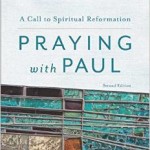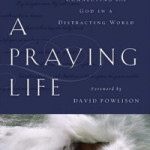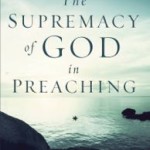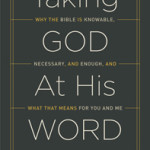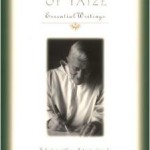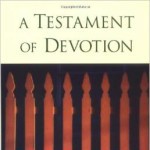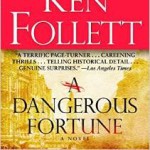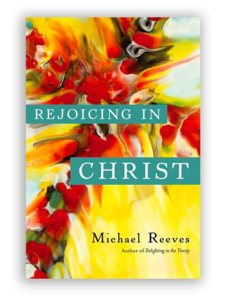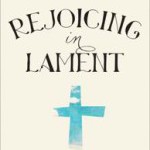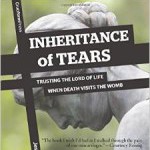A series of thoughts on Paul Miller’s for an upcoming colloquium on biblical spirituality I’m in at SBTS.
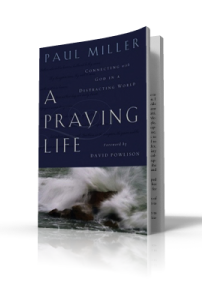 What is Miller’s thesis in A Praying Life?
What is Miller’s thesis in A Praying Life?
Miller’s purpose in writing A Praying Life is, “I wrote for Christians, for those struggling to do life, who pray badly yet long to connect with their heavenly Father” (11). The main thrust of the book is that in order to pray to the Father with constant joy we must become more childlike in our prayers. He believes some adult habits (i.e. cynicism) “keep us from being drawn into the life of the Father.” To combat this we need to understand our identity as children of God drawn into the story of the Father. This story is one we join in when we pray.
What are three places in the book where you believe Miller is most biblically profound, and why do you think so?
Throughout the book Miller uses Scripture more for purposes of application than interpretation. He’s normally assuming the interpretation of a given passage at hand and his point in making reference to it is so he might exhort or challenge his readers.
One place of useful biblical discussion is on page 48 where Miller talks about the Old Testament background of praying out loud. Pulling from John 17 and Hebrews 5:7 Miller says, “Jesus follows the custom of praying out loud.” His meditation on the power of hearing yourself pray is powerful. He writes, “When I confess a sin aloud, it feels more real. When I hear my own voice admitting that I’ve done something wrong, I’m surprised by how concrete the sin feels. . . . [Praying out loud helps] my prayers become more serious” (48).
Chapter 10 offers various cures for the cynicism that afflict many adult Christians. Miller’s first cure is linked to Matthew 10:16, which says, “I am sending you out as sheep in the midst of wolves, so be wise as serpents and innocent as doves.” Miller comments, “The overwhelming temptation when faced with evil is to become a wolf, to become cynical and lose your sheeplike spirit. Jesus tells us to instead be warm but wary — warm like a dove but wary like a serpent” (83). The “warm but wary” caution/cure is an excellent articulation, based on Scripture, on how Christians can fight against the cynicism so common in our day.
A third place where Miller helpfully uses Scripture to illuminate his teaching is when he talks about Jesus’ prayer in Gethsemane on page 132. At this point in the chapter Miller has said many Christians fall into one of two camps in prayer. The first camp is one of “Not Asking” and its opposite is “Asking Selfishly.” Miller remarks, “Jesus’ prayer at Gethsemane demonstrates perfect balance.” He avoids the Not Asking cliff by praying for God to remove the cup of suffering (Mark 14:36). He simultaneously avoids the Asking Selfishly cliff in saying with his next breath, “Yet not what I will, but what you will.”
Are there any places in the book where you differ from Miller’s understanding of the biblical text? If so, discuss your differences with Miller.
As stated above, Miller’s book is largely one of applying Scripture more so than interpreting Scripture. We must admit that application is some kind of interpretation, so where his applications seem stretched we may wonder if his interpretation of the respective passage is correct.
One place where I would differ from Miller’s use of the text is in chapter three, which is entitled, “Become Like a Little Child.” Miller takes the gospel passages of Matthew 18, Mark 10, and Luke 10 where Jesus rebukes his disciples for not allowing the little children to come to the Savior. Jesus famously said, “Let the children come to me; do not hinder them, for to such belongs the kingdom of God. Truly, I say to you, whoever does not receive the kingdom of God like a child shall not enter it.” From this passage Miller says, “Come [to Jesus in prayer] overwhelmed with life. Come with a wandering mind. Come messy” (32). He is surely right to say that our identity as children means we ought not come with hypocritical pretense. However, the warp and woof of Jesus’ teaching in those passages is on faith as the way of the kingdom — not messiness. He gets closer to the point on 37-39 when he calls the reader to continually and trustfully ask of the Father.
Another place where I’d take issue with Miller is on page 40 where he writes, “Besides asking and believing like a child, learning to pray involves, surprisingly learning to play again. How do little children play? If you ask a parent how long a one-year-old stays on task, he or she just smiles. But if you must know, it varies anywhere from three seconds to three minutes. It isn’t long, nor is it particularly organized.” To prove his point on playful prayer Miller turns to the apostle Paul’s prayer in Ephesians 1 and 3. In chapter 1 Paul seems, according to Miller, to pray without certainty of where he’s going and in chapter 3 Paul is “all over the map. It is classic ADD praying” (40). While I understand what Miller is communicating here, it would have been closer to these texts to talk more about soul-thrilling doxological qualities to Paul’s prayers rather then simply reduce them to playful “scattered-ness.”
What does this book have to say about praying the Bible?
Almost all of Miller’s thought on praying the Bible are saved until chapter 27, “Keeping Track of the Story: Using Prayer Cards.” Here Miller talks about the spiritual epiphany he once had of “put the Word to work.” He wisely instructs readers to consider using a card system whereby each card represents a person you are praying for and then fill up the card with pertinent matters for prayer. Some of these items should be biblical verses we are praying for the individual.
Also, Miller anecdotally talks about praying through Psalm 23 on page 87.
In what ways is this book about personal prayer and in what ways it is about prayer with the church?
This book is entirely about personal prayer.
What part of this book is most needful in your ministry context? Explain why this is so and what steps would be necessary for this part of the book to become a reality there.
A Praying Life is most helpful for our church context on pages 49-50 when he says, “One objection to a daily prayer time is ‘I pray all the time.’ While being ‘constant in prayer’ (Romans 12:12) is an important way of praying . . . there is no substitute for focused times of prayer.” Miller goes on to offer seven simple suggestions for morning prayer that are excellent for our people to consider.
Because we live in a rapidly expanding, wealthy suburban context the temptation to merely run the rat race of life (what Miller calls focusing on time, money, and talent as all we need) and give little attention to prayer. The majority of our people thus aim to make each day one of ceaseless prayer — praying on their commute, before meals, and ultimately “praying their way through the day.” And praise God for that burden! I feel the Lord has blessed our church uniquely in its affection for prayer.
We know, however, that scheduled and systematic prayer is a friend not foe to constant prayer. So we have extended prayer times scheduled in each week’s gathered worship, a monthly prayer night, small groups carving out time for prayer, and encouraging individuals to meet one on one for Bible study and prayer with regularity.
What do you think is missing from this book on A Praying Life?
A weakness of A Praying Life is that is almost exclusively focuses on prayer of petition. There are moments where supplication and thanksgiving appear, but the book would have been well served to show how the life of prayer is one of all kinds of prayer. Specifically, prayers of adoration and lament are absent. Given Kim’s struggles, how wonderfully served the reader would have been to see how faithful lament had a place in the Miller’s life. I’m sure it did, but Miller chooses to focus entirely on matters of petition when it comes to his children.
Additionally, the book never advocates the fullness of how God’s children ought to approach in prayer: reverent affection. There is an emphasis on the latter, but the issue of reverence seems to be an afterthought.
Finally, A Praying Life’s greatest weakness is the absence of how Christian prayer is one done in community. Where are anecdotes of praying with the church, at church, or in the context of biblical community?
Have you read anything more helpful on the matters addressed in A Praying Life? If so, what was it and why was it more helpful?
I find Keller’s Prayer to be more useful than Miller’s book. Keller has noted affinity for Jack Miller and the Sonship movement (see his article “What’s So Great About the PCA”), so much of his exhortation sounds like Miller’s. Yet, Keller is more expansive than Miller, dipping into the wealth of not mere experience but of bible, church history, culture studies, and heart diagnosis. One wonders how long Miller’s book would be if all the family anecdotes were taken out. It would likely be quite thin, which I think highlights how rigorously simple (not a bad thing!) he is to his theme.
What impact has this book had on your personal prayer life or in your ministry leadership of prayer?
The book’s greatest impact on my life is encapsulated in this quote, “If you try to seize the day, the day will eventually break you. Seize the corner of his garment and don’t let go until he blesses you. He will reshape the day.” This is a profound thought that’s already shaped how I go about my ordinary day.
 For almost 300 years Wesley’s anthem of triumph has rung out in Christ’s church. Tim Challies writes, “The earliest forms of the hymn can be traced back to a Latin text from the 14th century. In 1708 the four Latin stanzas were translated into English and published by J. Walsh in Lyra Davidica under the title “Jesus Christ Is Risen Today.” A few decades later, in 1739, a modified version was published by John and Charles Wesley (Charles is pictured to the right) in Hymns and Sacred Poems under the title “Hymn for Easter Day.” It is this version, later shortened and supplemented with the “Alleluia” refrain, that has become the hymn that remains so popular today.”
For almost 300 years Wesley’s anthem of triumph has rung out in Christ’s church. Tim Challies writes, “The earliest forms of the hymn can be traced back to a Latin text from the 14th century. In 1708 the four Latin stanzas were translated into English and published by J. Walsh in Lyra Davidica under the title “Jesus Christ Is Risen Today.” A few decades later, in 1739, a modified version was published by John and Charles Wesley (Charles is pictured to the right) in Hymns and Sacred Poems under the title “Hymn for Easter Day.” It is this version, later shortened and supplemented with the “Alleluia” refrain, that has become the hymn that remains so popular today.”

